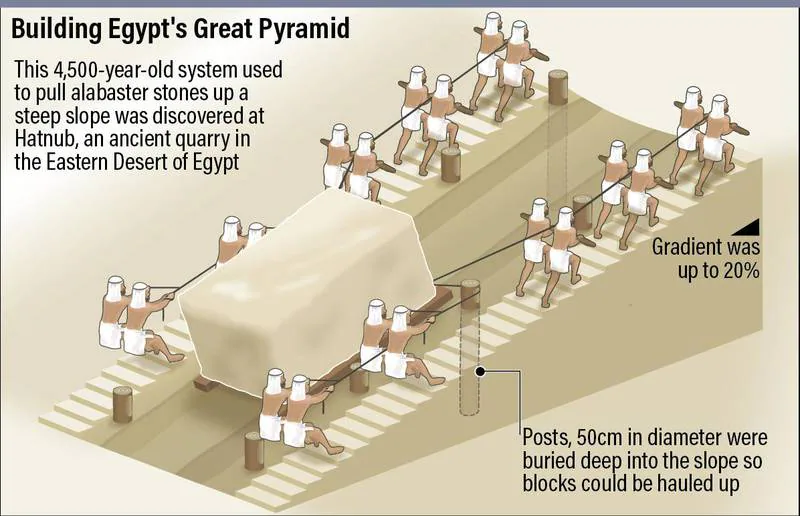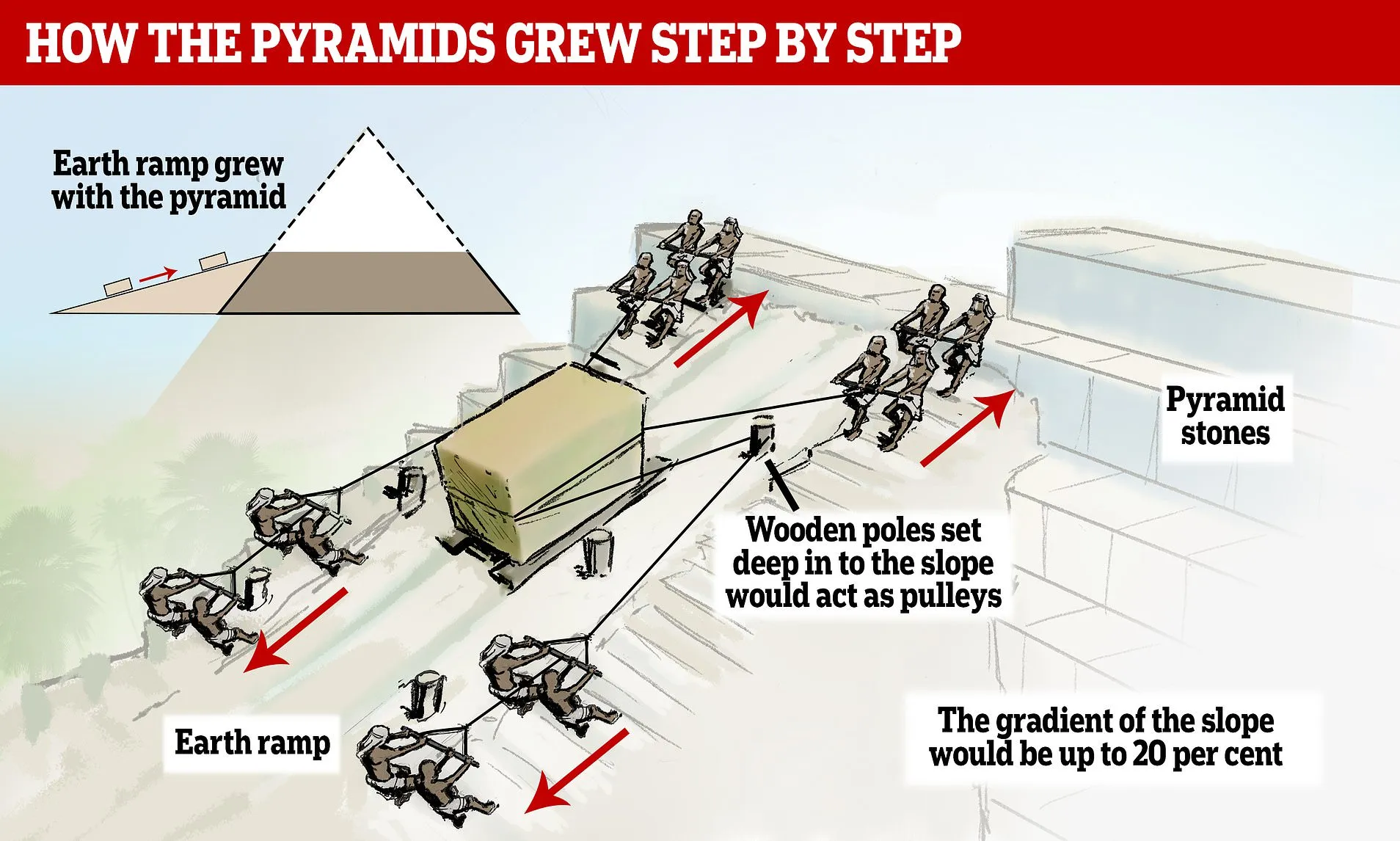Decoding: Revealing the ingenious method of stone transportation in ancient Egypt. The truth will surprise you.
The Great Pyramid is made up of an incredible 2.3 million limestone and granite blocks, each weighing at least two tons.

This giant structure was started some 4,500 years ago and the way it was built has baffled many.
Now, a group of experts has come up with an interesting explanation.
Discarding wild ideas about aliens, recent findings show that clever Egyptians could have used the natural landscape to move huge blocks of stone, highlighting their exceptional engineering skills.
These experts believe that the ancient builders could have used a nearby canal, an arm of the Nile, to transport the heavy stones across the desert.
A tributary is basically a smaller river or stream that flows into a larger one.

His theory is supported by detailed studies of the ancient soil in the area around the pyramids of Giza.
By looking for pollen and ancient plants commonly found near the Nile, these studies confirmed that there was once a water channel there, known as the Khufu Arm.
Archaeologists have dug nearly 30 feet underground to obtain samples that could prove their theory, uncovering layers of Egypt’s ancient past in the process.
They found evidence suggesting that the Cheops arm, a branch of the Nile, was used to move heavy stones to the pyramids. This waterway would have been instrumental in transporting the stones to their final positions.
In their research, the archaeologists also identified 61 different types of plants, increasing our knowledge about the environment of ancient Egypt.

This idea came about thanks to a piece of papyrus found in the Red Sea.
This ancient document details the account of ‘Merer’, an official who was in charge of transporting limestone down the Nile to Giza.
This historical account supports new evidence showing the importance of rivers in the construction of the pyramids.
Although Khufu’s branch has since disappeared, the impact of this discovery is significant.
Advertisement
Not only does it help explain how the stones were moved, but it could also help better understand how the Egyptians built these incredible structures.
The way the Egyptians adapted to their environment to build the pyramids could reveal more secrets in the future.

Hader Sheisha, an environmental geographer who worked on the study, stressed the importance of this to The New York Times.
Advertisement
He explained: “Knowing more about the environment can solve part of the enigma of the construction of the pyramids.”
As we learn more about how the Nile aided in the construction of the pyramids, we gain a clearer view of what the ancient Egyptians accomplished.
The story of the pyramids of Giza is not over yet.
Each new discovery reveals another layer of the mystery, giving us greater insight into the abilities of the ancient Egyptians.






